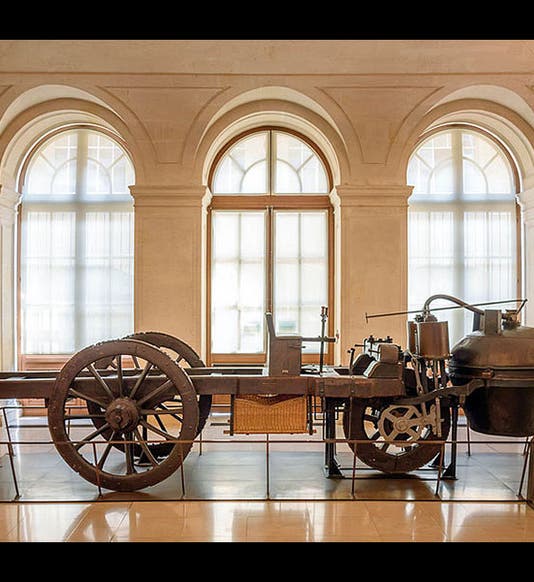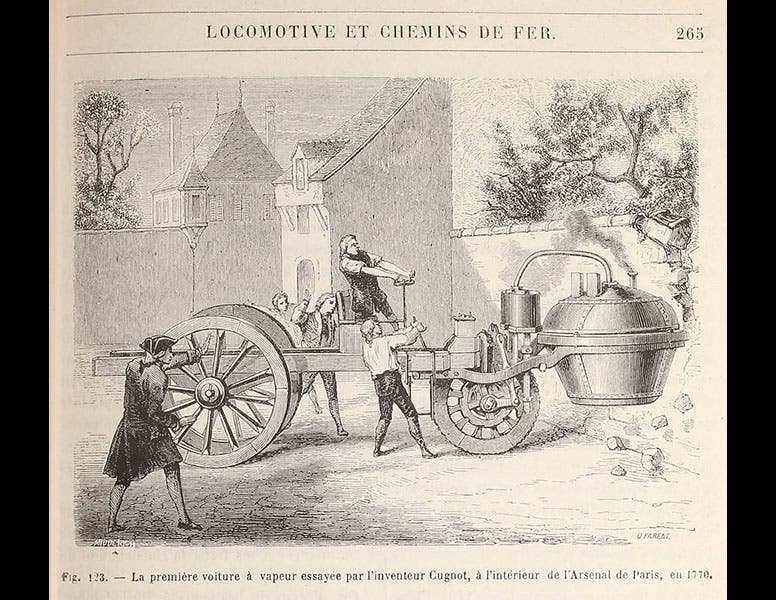Scientist of the Day - Nicolas-Joseph Cugnot
Nicolas-Joseph Cugnot, a French Army officer and engineer, was born Feb. 26, 1725. Tasked by the Army to develop a steam-powered vehicle for the purpose of hauling cannon, Cugnot devised a scaled-down working model in 1769, and in 1770, he unveiled a full-sized steam-driven vehicle, which he called a fardier à vapeur. It was modeled on a heavy army horse-cart (fardier), except that instead of having a horse at the front, there was a third wheel, which supported, in an ungainly fashion, a copper boiler and a ratchet-like linkage to drive the front wheel. The machine could reputedly move at a little over 2 miles per hour, but it needed to be refueled with wood every 15 minutes, for which the fardier had to come to a complete stop. It was also difficult to maneuver, which you can understand when you look at the placement of the boiler. After several years of trials, the Army abandoned the project. Cugnot received a generous pension from the King for his ingenuity, but he could not foresee the French Revolution, which cut off not only the King’s head, but his stipend, and he lived in poverty in Belgium for most of the rest of his life. Napoleon invited him back in 1804 and restored the pension, but Cugnot died later that year. However, his machine survived and can be seen today in the Musée des Arts et Metiers in Paris (first image). A detail of the front wheel shows the ratchet-drive mechanism (second image).
Several working replicas of Cugnot's fardier à vapeur have been built. We show above a French version (third image), and link to a short video that shows the replica in action with the steam up.
The fourth image may look familiar, if you are a regular reader of this blog. It is from Louis Figuier's Les merveilles de la science (1867). We featured Figuier and his illustrated history of inventions in this space on Feb. 15, 2018, with the image of Cugnot’s steam-powered fardier leading off.
Dr. William B. Ashworth, Jr., Consultant for the History of Science, Linda Hall Library and Associate Professor, Department of History, University of Missouri-Kansas City. Comments or corrections are welcome; please direct to ashworthw@umkc.edu.










